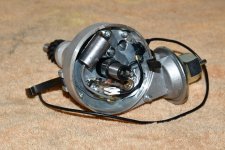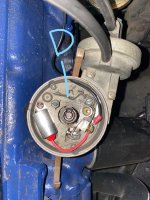Elijah Gerke
New member
Well I overcame the misfire from the bad gas and about 3 weeks later another one popped up, but this time it was something else. Ignition, it would be fine at some times and horrible at others. Eventually it became if I layed on the throttle more than halfway it would spit and then die then if I let back off it would magically restart itself. I tested compression, fuel, air, and vacuum. One day when I had some free time I started to tackle the problem and when I gave it more than halfway to test it this time it died for good. So I get it home and it will not spark at all. It will turn over but no spark. I immediately looked at my points and condenser. And figured I may as well replace them because I had no "service history" on the car so then I made sure all of my plugs, wires, cap, and rotor were good. Tried firing it and nothing. This led me to believe the coil was shot so I was recommended this COIL wired it all up and still nothing, only reading about 5.5 volts at coil in the on position and about 12.5 volts at battery I know this is low but it should still give me a little spark right apparently no. I redid my ground wires to the distributor and part of the + wires to the coil. With the - side of the coil off I read 12.5 volts at the coil in the on position. But whenever I wire up the - side it goes back down to 5.5. When cranking I get between 5.5-8 volts with no spark. I have tried my best and now it is my time to come to you guys.
Btw
Points, cap, rotor,and condenser are all Napa or Echlin and points are gapped to .027 in the highest position on the rubbing block.
Any help would be greatly appriciated- Gerke
Btw
Points, cap, rotor,and condenser are all Napa or Echlin and points are gapped to .027 in the highest position on the rubbing block.
Any help would be greatly appriciated- Gerke



